Delaware
Watching horse shoe crabs and birds
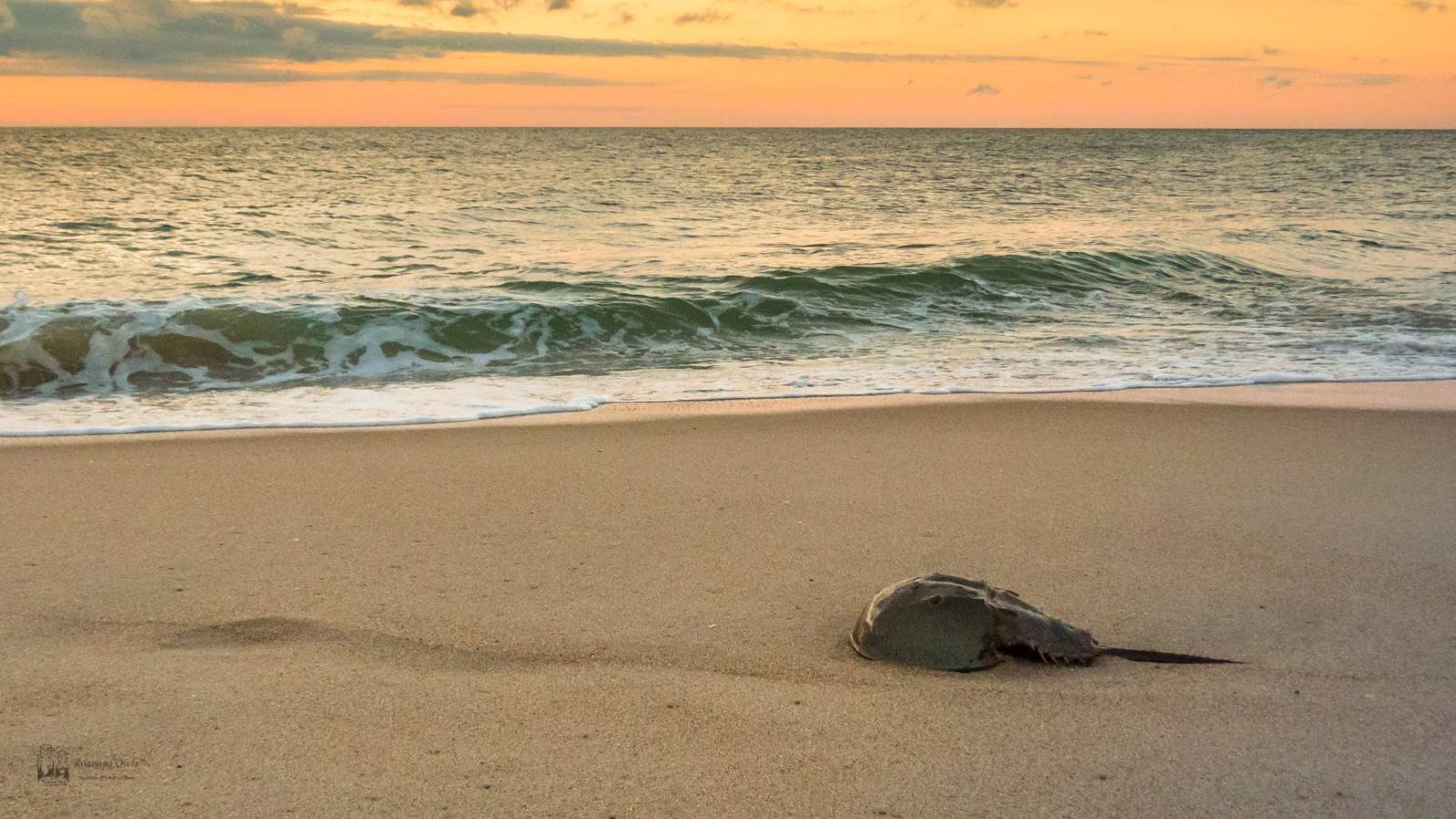
The horse shoe crab is one of the most prehistoric of all living animals. Their ancestors can be traced back to 445 million years ago which is 200 million years before the age of dinosaurs . You can see them in Delaware sea shores!
We sometimes have a chat on how certain animals have very unique body shapes. In some cases we have observed creatures that have body shapes to the extent that they look alien in nature. Certain times we wonder how they even move around in their shapes ?! A horseshoe crab is one such fellow but he has managed to survive for millions and millions of years. During my school days I watched some program in discovery channel about horseshoe crabs and the importance of them for the medical industry. My reaction after seeing the program was , why is this thing so weird looking and can it even run from danger. It has a shell and a tail. Why does it have a tail ? These are times when google was not around , so finding answer instantaneously was not an option . After pondering about this , I kind of forgot about the whole crab thing but it rested as a curiosity deep inside my head. All that curiosity in my head just needed simple trigger to make me spring into action.
It was March and we were in US . The winter was particularly extreme and we were waiting for spring. Normally we will go in search of flowers in spring but birds were also part of the agenda. So we started looking at migration paths of birds and decided to meet them at these hotspots. While listing migration paths Delaware came into view.
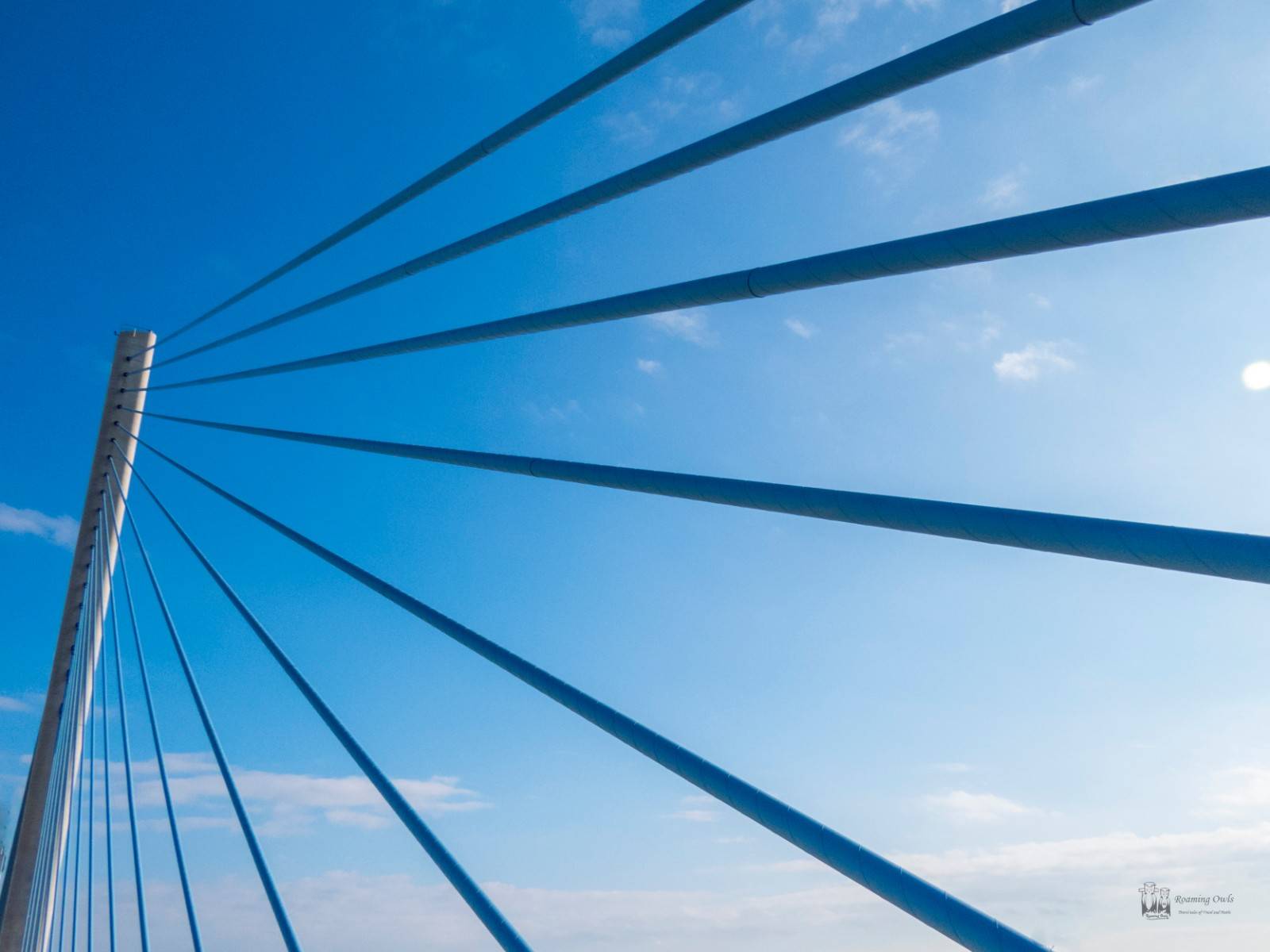
A suspension bridge along the beach was painted in a beautiful blue color matching the blue skies.
Delaware was a small state on the eastern seaboard of United states and is one of the most urbanized states of US with no major forest areas. These kind of places fall last in our list , so we hardly ever cared for visiting these locations. But on the contrary , Delaware seemed to be a hot spot for birds because of a migration pit stop for wading birds ! After further searches we came across details about horse shoe crabs breeding and the coinciding bird migrations.
This is a very potent combination for a couple who have been bored by the harsh winter and trying find an escape.
It was a 1000 mile up and down trip and we had only 2 days.
As usual we decided to drive at night and reach Delaware early morning for the sunrise. Our faithful little phone with its awesome navigation feature showed us the way. We have relied on the navigation so much that , we blindly followed it sometimes and this time also we did the same but we were in for a surprise. It had picked up a different route than we anticipated and that being a toll road, we ended up spending more on toll than on fuel ! Still after some hiccups we managed to reach Delaware for the sunrise.
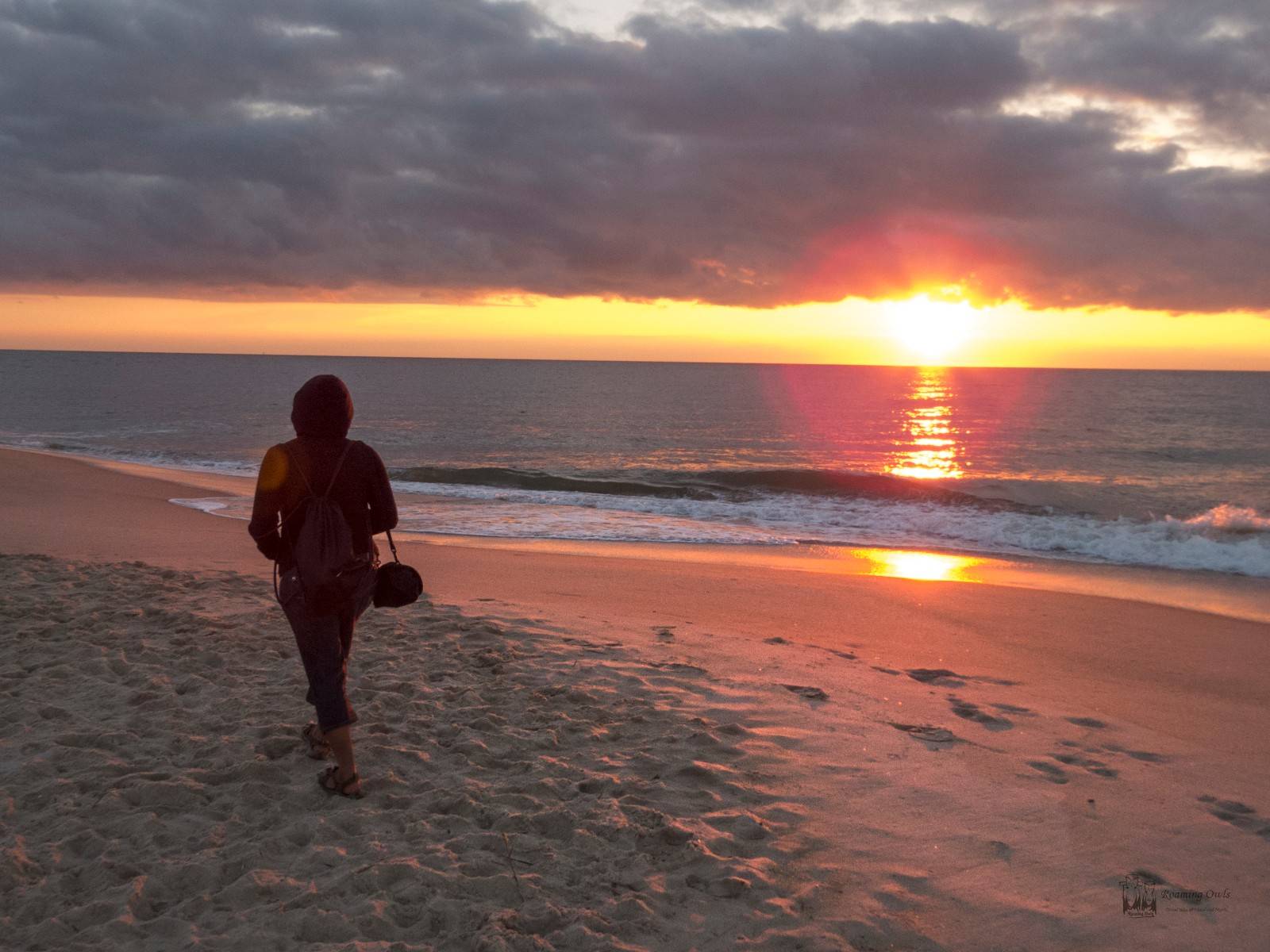
As usual , we do not miss sunrises or sunsets. Though it was a little cold, it was all worth it.
And we were not disappointed. It was chilly but as soon as we landed, our spirits hit a high. There was a single horse shoe crab. It was slowly dragging itself on the beach waiting for the next wave to pull it in. We were jumping in joy but WHERE ARE THE BIRDS ? There was a lonely gull staring at us but then nothing much. We kept on taking pictures of the crab until it left. Now we started searching for the birds and we were lead to believe based on our research that there will be flocks and flocks of them to the extent that you can spot them from very far away. But no birds here! We started thinking have we missed the bus…The annual migration happens for only a couple of weeks coinciding with the time when the horse shoe crabs come to the shore to lay eggs. The eggs being the food for the birds act as the timer for the birds who arrive in Delaware at the right time for the feast. Did we mistime this travel to Delaware was the question ?
We kept wandering the coast line and after spotting few birds here and there we went back to the car scratching our heads. Just to lift our spirits we found a cute one waiting for us. The eastern cotton tail rabbit roams around freely but runs off at the first sight of trouble but this one spent some time staring at us.
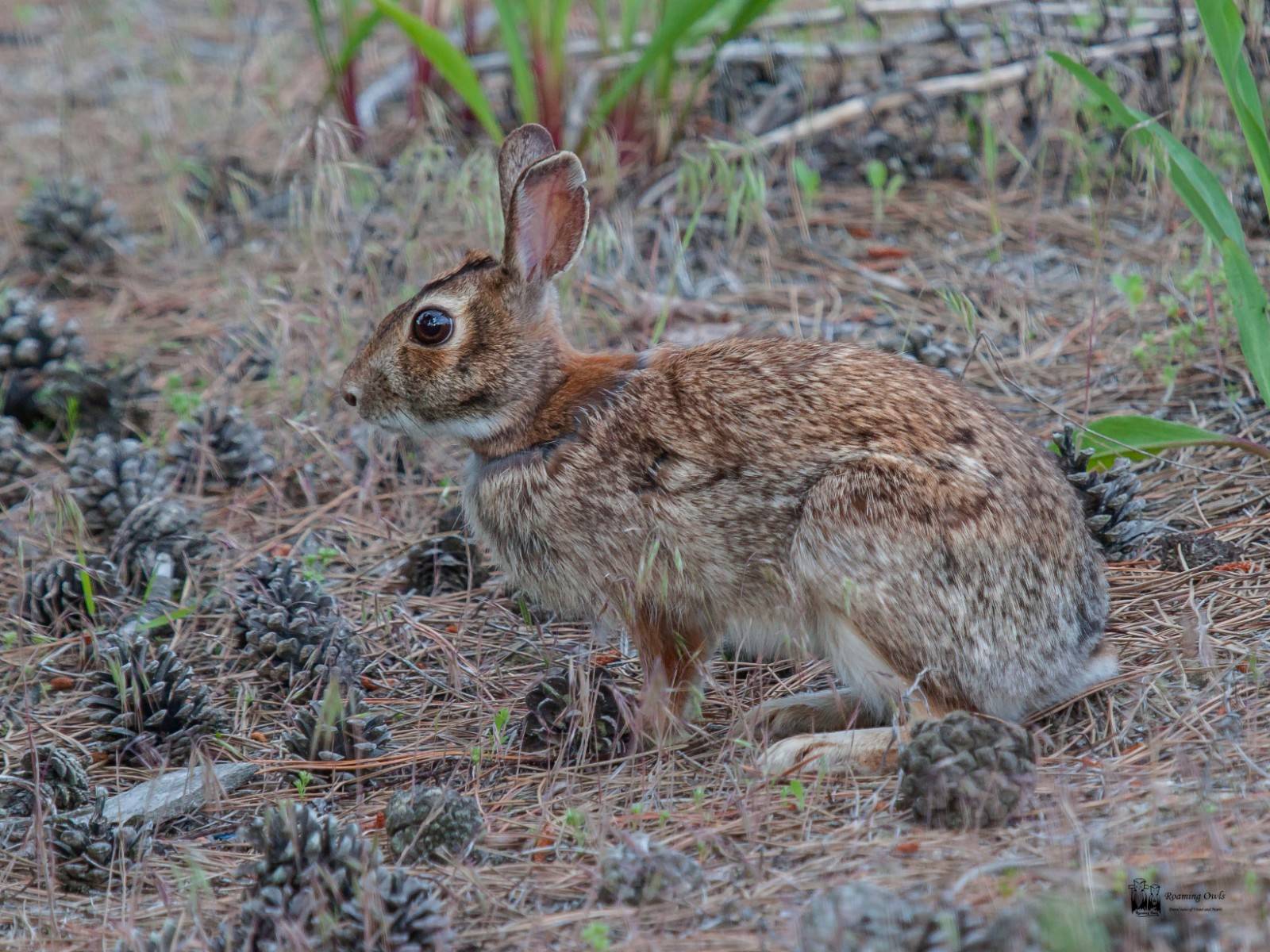
The eastern cotton tail rabbit is a curious animal which seems to have adapted well to urban areas.
Once he slipped away, we started weighing our options and at some distance there was a small patch of vegetation which looked quite inviting. Where there is vegetation there are always birds. We went inside to have a look but it soon opened up into a patch of wild flowers. We certainly did not anticipate this. The Delaware shoreline is always a very unique habitat with several unique species and we were very happy about this find. We spent some time exploring all the flowers there,thus ending our 4 month winter drought.
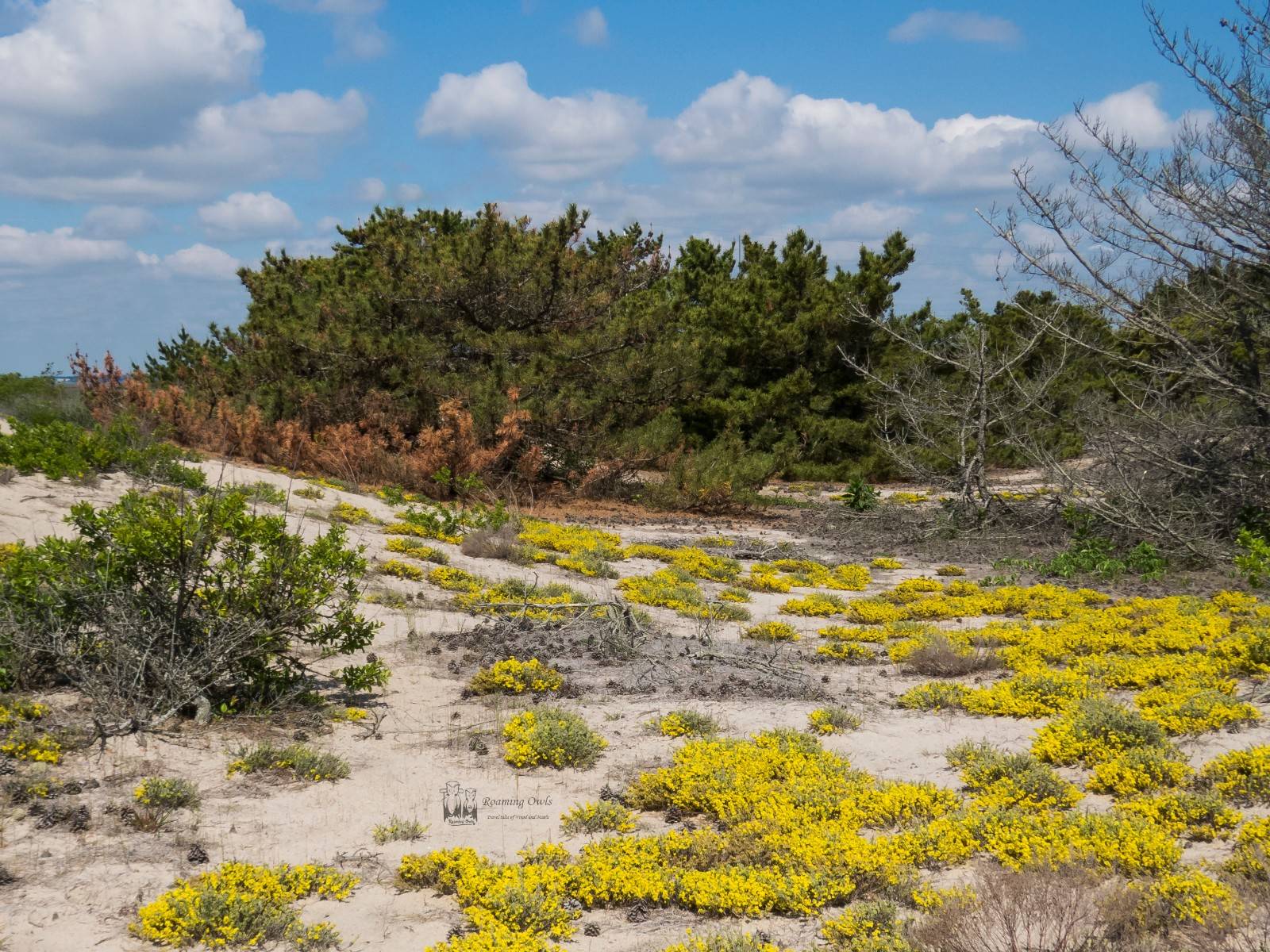
The sand dunes of the beaches are an unique habitat. Because of the occasional sea water intrusion only tough plants like this False Heather can survive .
After seeing the flowers we had to restrategize. We had come prepared for such a scenario and had other backup sites that needed exploring. We planned to go check each of them one by one. This is where it is kind of tricky. The beach we came was a famous one and is safe for us but the other spots are either remote or backside of housing blocks. We have faced racism by american white people, so we wanted to be cautious.
Anyway being cautious is not bad. But, “what the hell” suddenly became our attitude , as we were able to get glimpses of birds behind the homes when we reached the location.
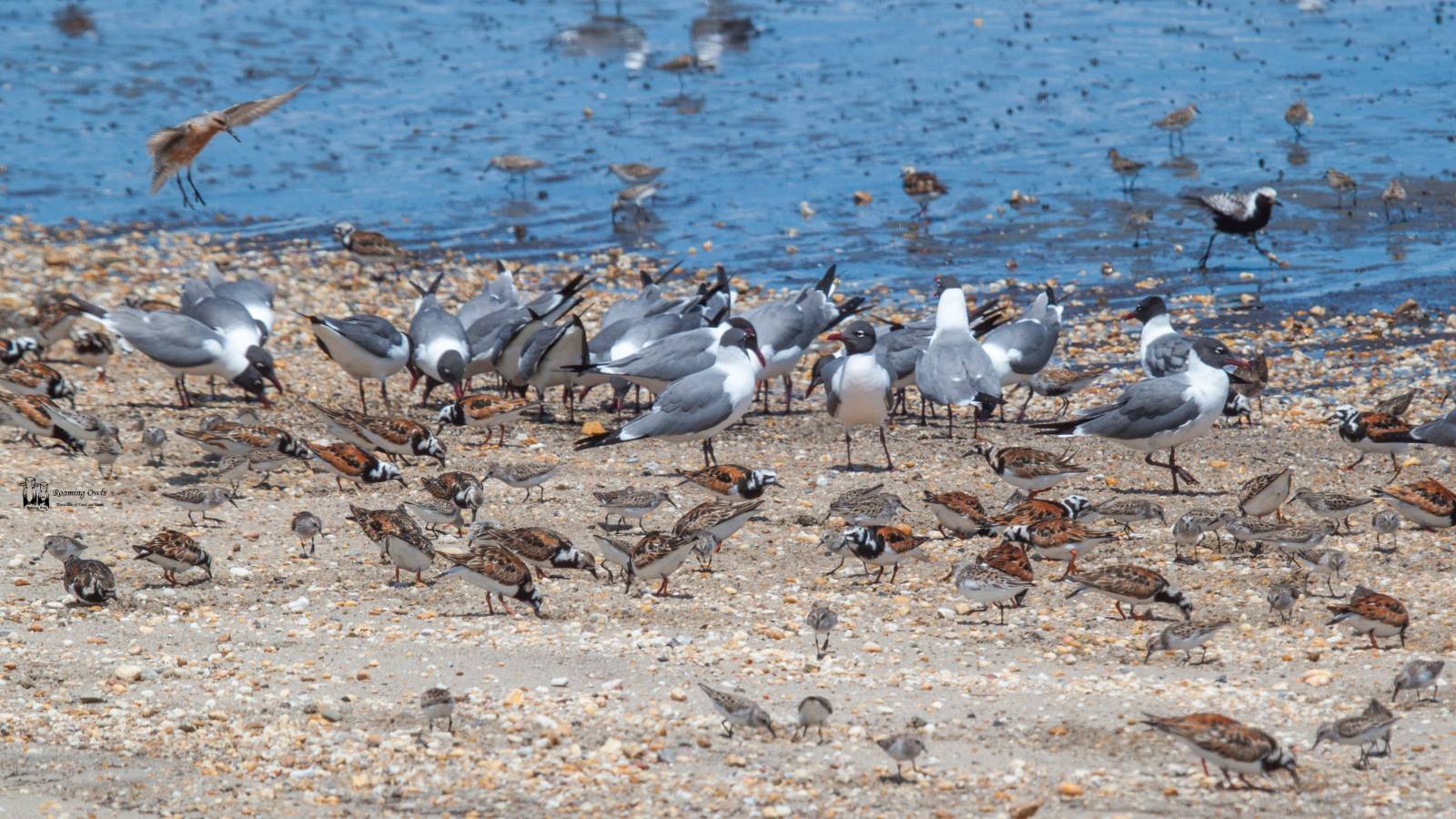
How many species can you spot in this? The most interesting species is the one which is just about to land on the top left corer of the picture. The bird is a red knot- they migrate from the southern tip of Argentina to Delaware nonstop and time their arrival just to coincide with horse shoe crab nesting. During the flight they lose half their weight but they regain it by continuous feeding.
As we drove across the houses we found that there was no access to the beach and the houses ran up until the shore line. We kept on driving looking for an opening and we found one finally. We quickly parked the vehicle and we got our gears and headed inside. Once we reached the beach, it was paradise. All the birds were here and so were horseshoe crabs. All our fear and inhibitions went outside the window because we were witnessing a major natural world event right in front of our eyes.

Horseshoe crabs have copper-based blue blood which contains a substance called “Limulus Amebocyte Lysate”, or “LAL” which is extremely important to the biomedical industry because it is the primary method for testing the sterility of medical equipment.
There were multiple species of birds, all in a rush to fill up their tummies and they hardly noticed us. However, if we approached too close they flew off but only to return. We were so overwhelmed that we simply sat down to just experience the moment. Unlike the other beach, this one was all pebbles and we wanted to have a look at what they were eating.
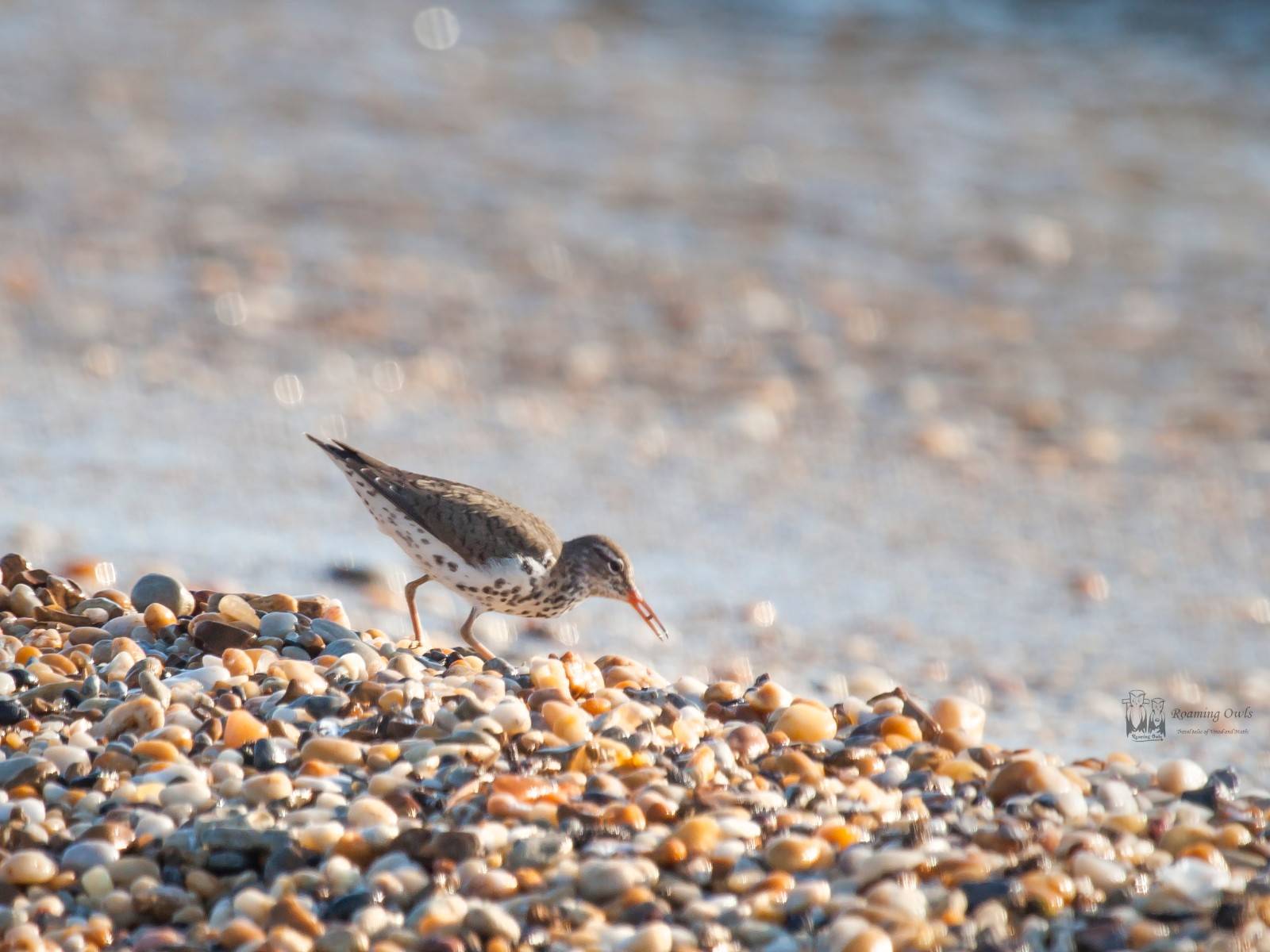
All the birds were continuously feeding without a break. The egg is tiny at about 2 mm
The birds kept moving forward and backward with the movement in water and it was hard to spot what they ate. The best time of the day to watch these birds was the low tide time and we had hit the jackpot with the timing. While observing these birds, there was a group of old people who came in with binoculars and started observing the birds.
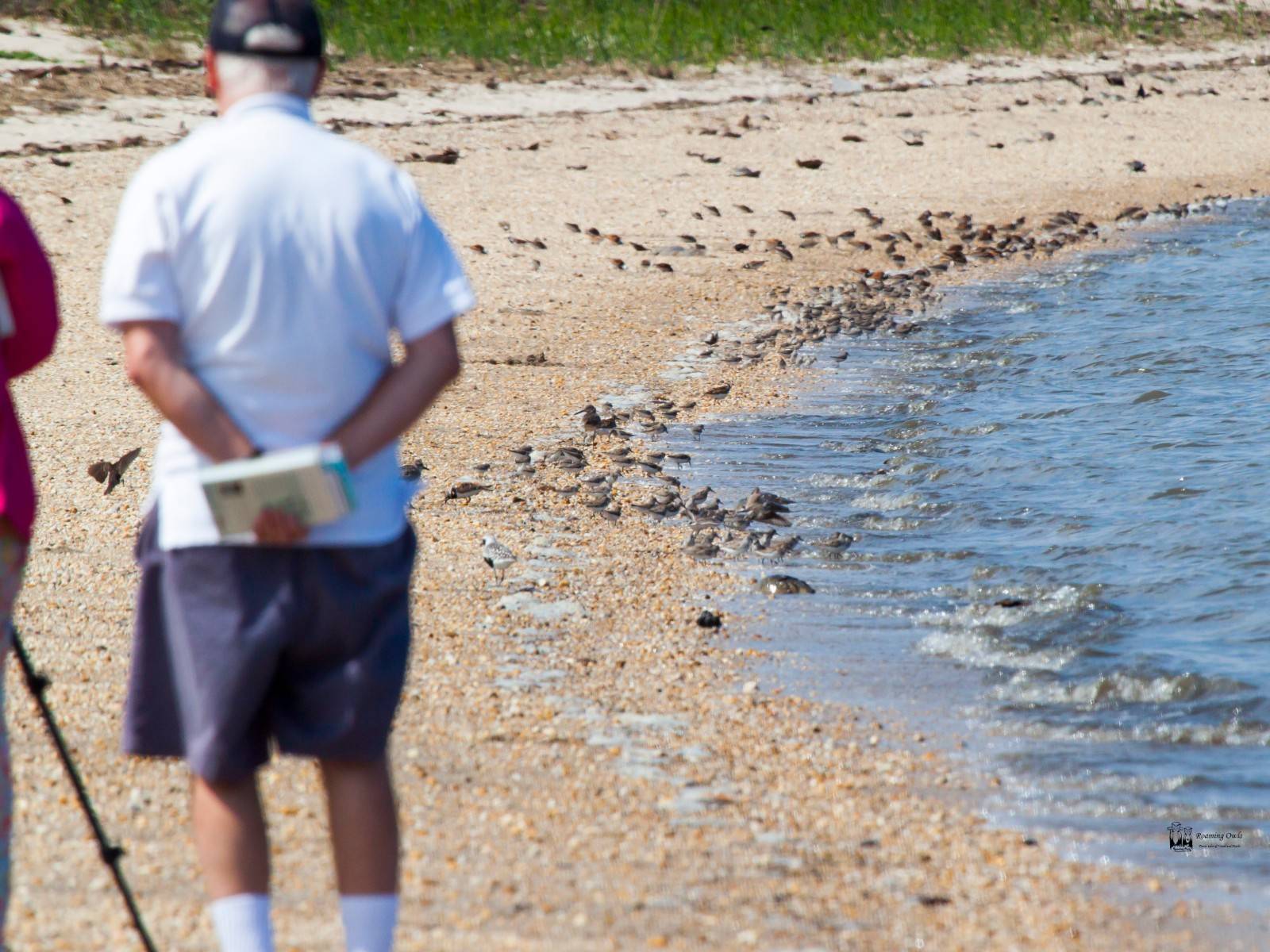
Americans like to document whatever they see. This group of birders we quick to take count of the number of birds and species.
We were happy that they were birding because where ever we go we are always the odd man out in the case of birding.Now we had company. One of them came to us and started talking about birding and started showing the special birds among the group. He went on and told us about other hot spots and told us to visit now itself as the tide is changing.
We quickly took the car and started to that place. When we reached the place, it was other species but not great in number. Oyster catchers , sanderlings , stints etc were all busy feeding on the eggs. We took time to relax and enjoy the breeze which was warm. We had not experienced warm breeze for 4 months.
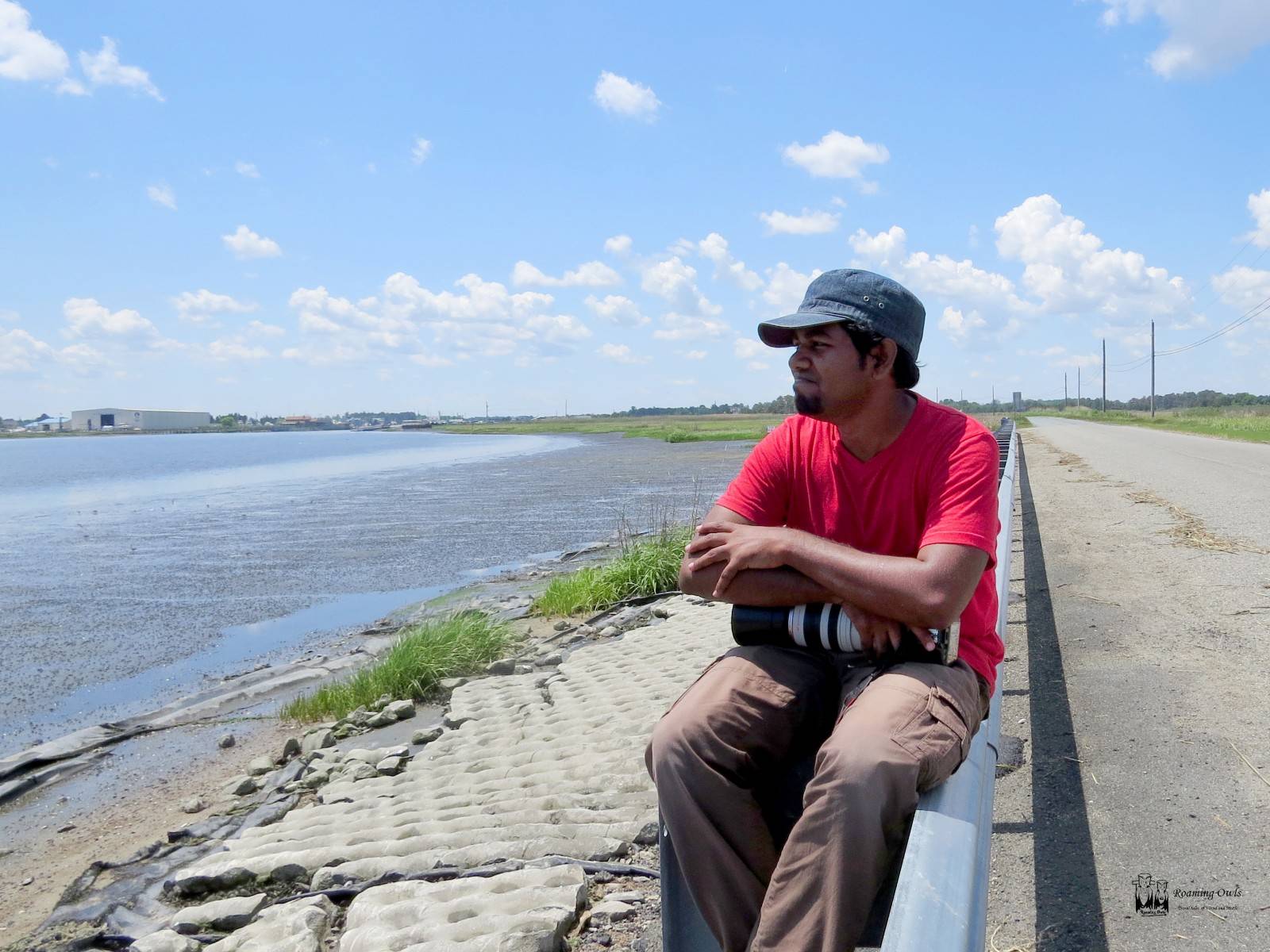
A little bit of sunshine and a warm breeze is all that is needed to lift my spirits after 4 months of winter. Obviously thousands of birds will help too…
Now that the tide has started coming in, the birds started moving to higher sand patches which were far away. We went to a small wildlife center nearby and they had detailed information about the migration. One old lady had a chat with me and explained how conservation worked in bringing back the horse shoe crabs from the brink of extinction.
While explaining, she took a jab at all the Asian countries as to how we have poor wildlife management policies and enforcement.
I was seriously offended but was in no mood for a fight. It was time for birding!
Soon the water rose to a level where the roads that we came in started getting flooded. We decided to go back to the town nearby where we had booked our stay. We checked in and after an hour we were back out again. We went back to another beach where shorelines were broader and hence birds could be roaming freely. We were right and there was a big flock feeding continuously. There were also ducks in the vicinity.
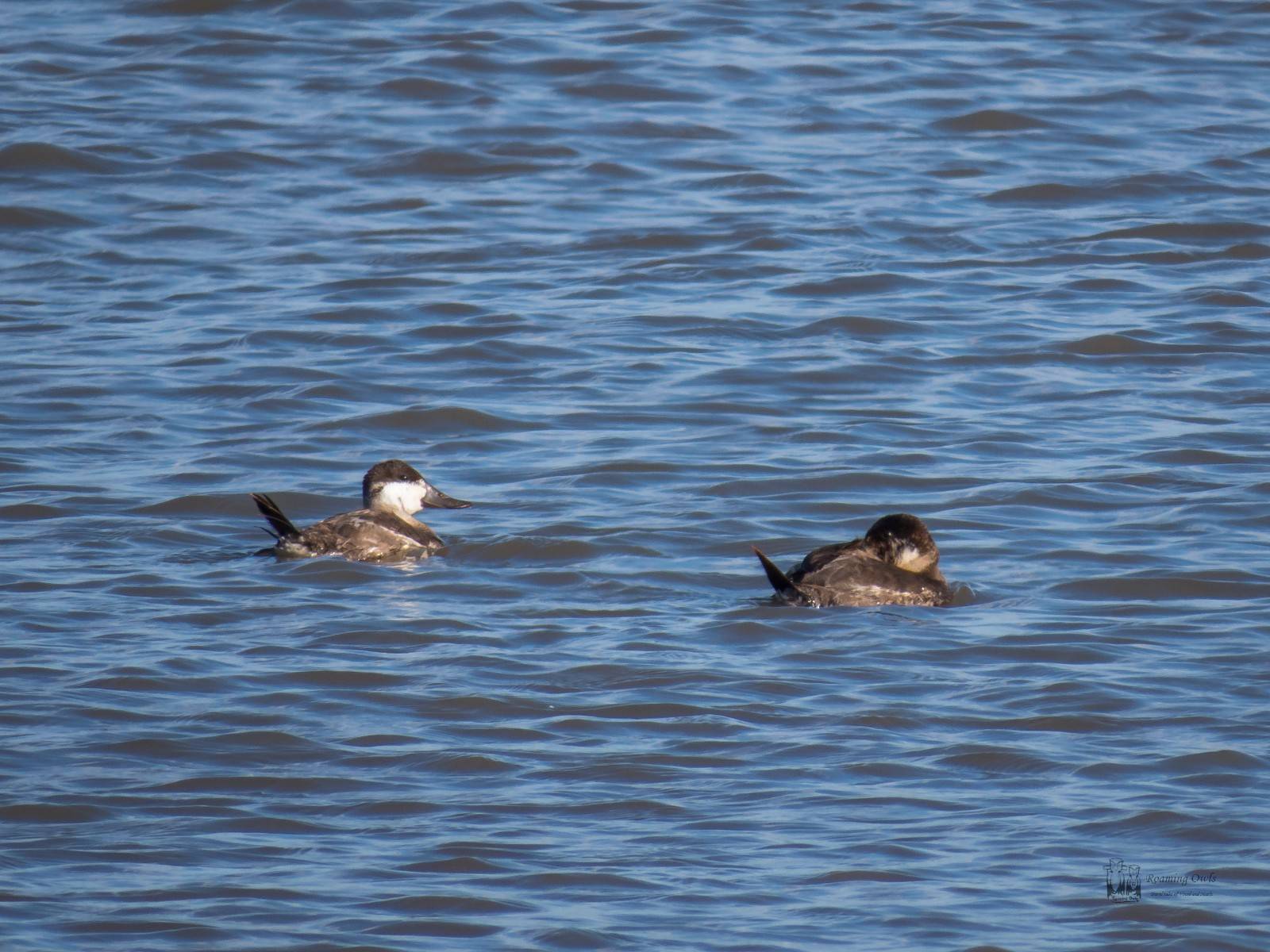
These ruddy ducks are hardly ruddy at all. End of winter these one’s have changed from their rustic red to a pale grey.
The evening finished with a sunset watching and we headed back to get prepared for the next day.
Next day we decided we go to the next destination -Bombay hook national wildlife refuge. While it was all shore birds yesterday we wanted to see the warblers during their migration as well. It was a controlled wetland , meaning that the forest department here artificially maintains the water level in the refuge. They had extensive propaganda boards as to how they achieved this and how it is good for the environment ! We started looking for birds and found our first catch.
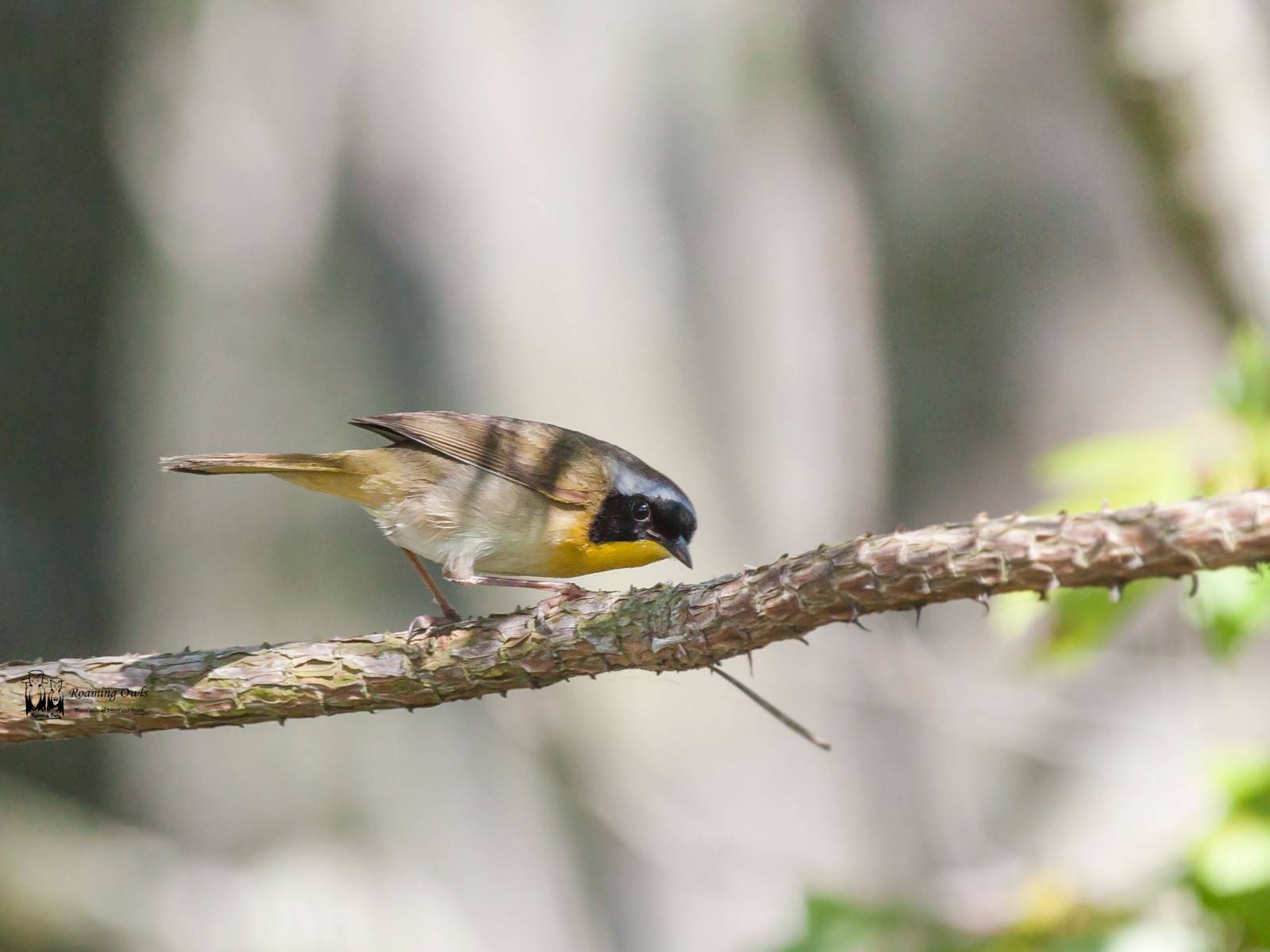
The common yellow throat / Geothlypis trichas is a very active warbler looking for insects from one bush to another. It has a beautiful song too.
We went further and started looking at the open wetlands and found only few egrets. Such huge areas, yet hardly any water birds but we had an interesting encounter. A big rodent about the size of a big cat was feeding on the vegetation. I knew it was a Musk rat, but this was the first time we saw it. It had a thick fur which seemed to get wet only on the outer rims. We took the opportunity to take video as well.

Muskrats are excellent swimmers so much so that they can swim backwards and forwards. These rats even mate underwater !
There was a sign board of Black necked stilt but we found only one,much to our dismay. But small birds like American Gold Finch,Indigo Bunting were roaming around. We then walked into a trail and saw a red fox but could not take any picture. Then we decided to pay our previous day destination another visit because of the tide timing. We found oyster catchers but at a distance. It seemed all species will converge to a single spot at this time of the year. By the time we had finished this round of birding it was already 2.00 pm. We decided to call it a day as we had another 8 hours drive.
On the way back we saw something different, an Amish settlement along the road. The Amish people maintain a lifestyle that is centuries apart from the rest of the world. They still rely on horses to plough the field and refrain from using most modern amenities. It was an interesting sight to tell us that “one can always choose a lifestyle that one wishes”. It is heartening to see such resolve in such a commercialized country.
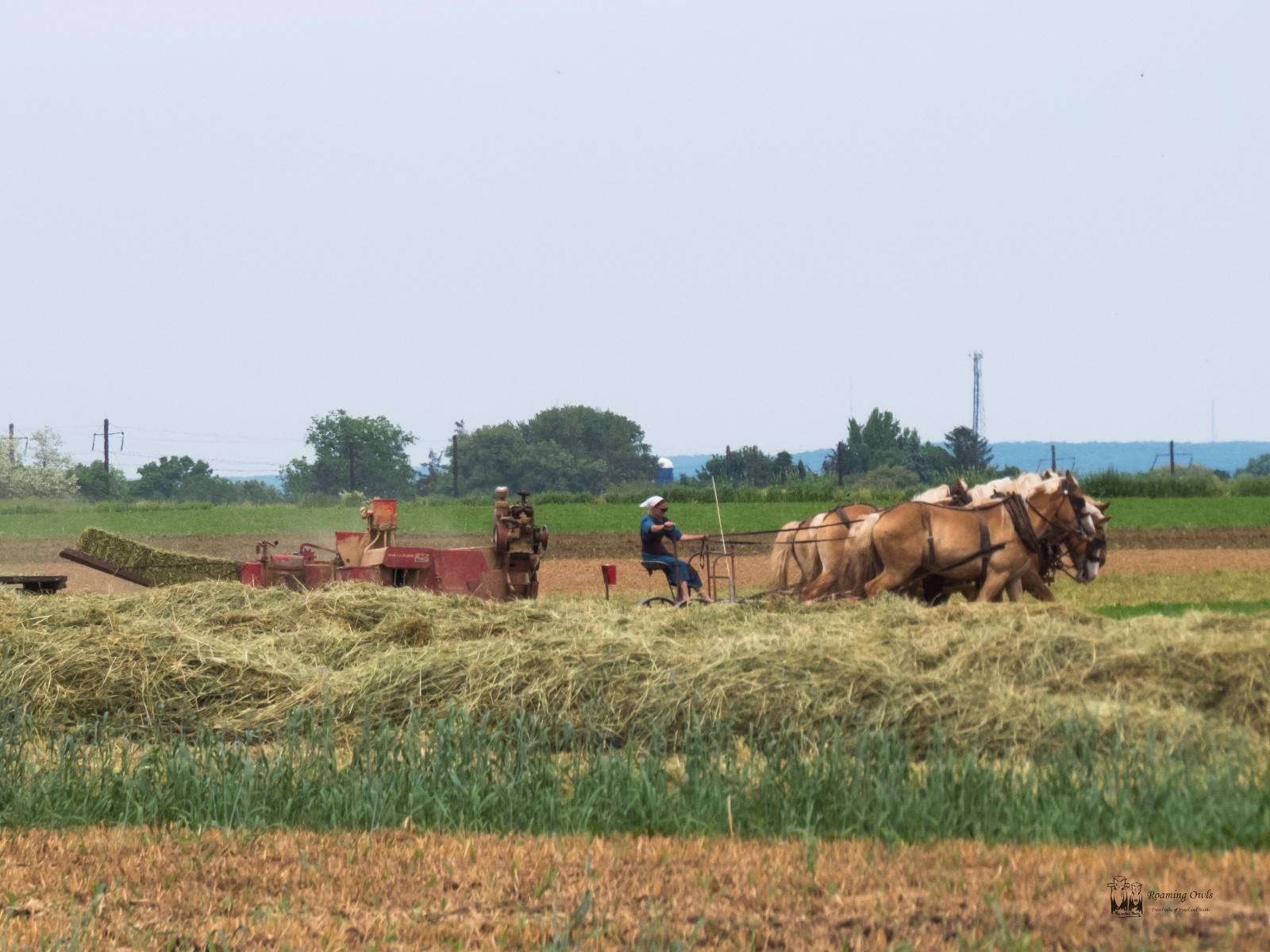
Amish people are a group of people with strong faith and an unique way of life where they do not embrace technology. While returning back to our place we saw this on a farm on the roadside.
This was a trip to remember as there was one point in the journey where if we had taken a right , Washington DC was just 50 miles away from Delaware and a left would have taken us to New York at about the same time. We never took any of those as we stuck with our conviction, that one has to travel to a place that one likes and not to the one’s to please others. In the years we stayed in US we never had the urge to visit Washington or New York even though almost everybody visiting US will do that. For us butterflies, birds and wildflowers and sometimes alien species like these horse shoe crabs look much better than tall skyscrapers and crowded streets.